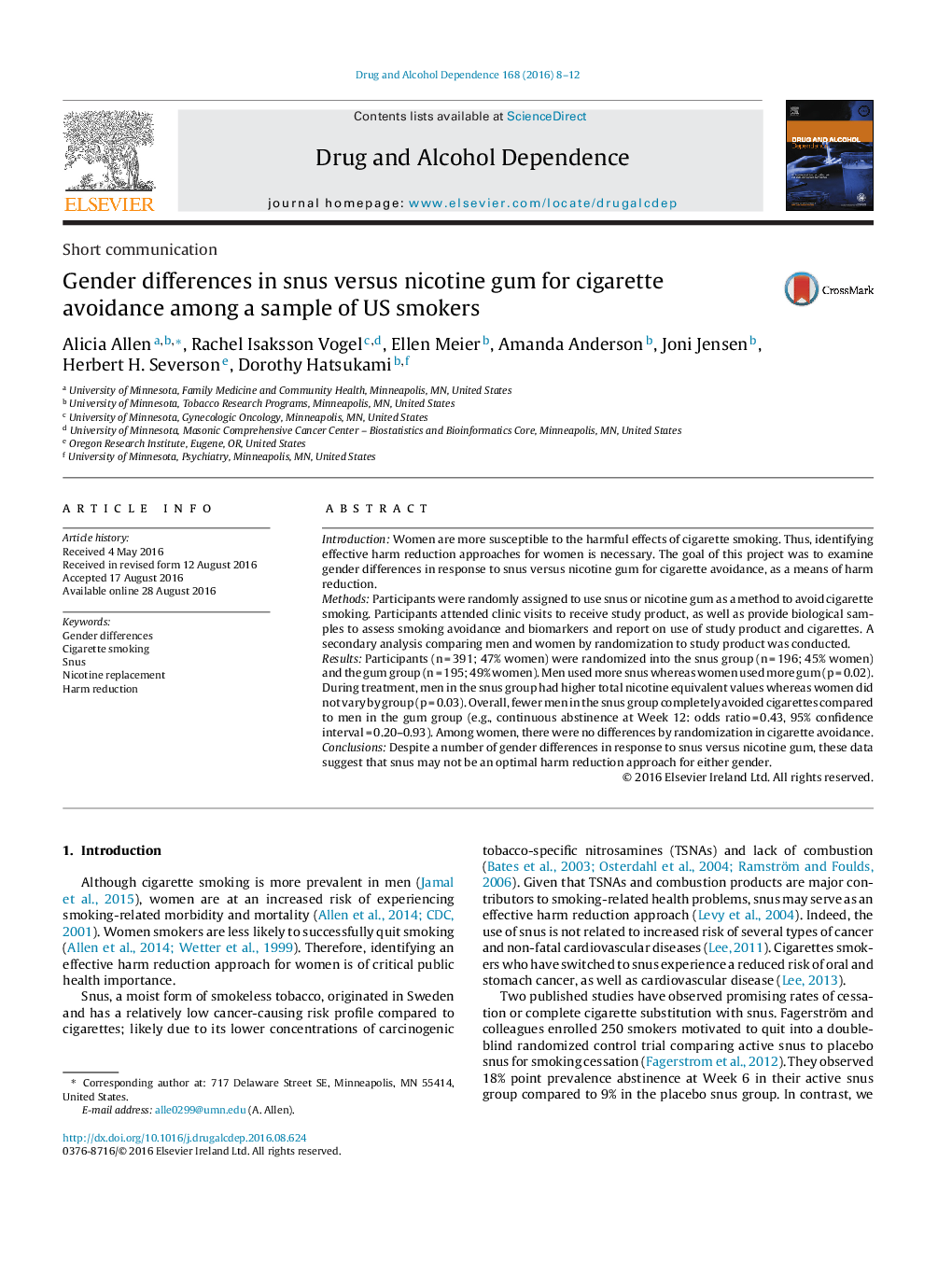| Article ID | Journal | Published Year | Pages | File Type |
|---|---|---|---|---|
| 5120477 | Drug and Alcohol Dependence | 2016 | 5 Pages |
â¢Smokers were randomly assigned to use snus or nicotine gum for cigarette avoidance.â¢During treatment, men used more snus whereas women used more gum.â¢Men using snus had higher biomarkers levels than men using gum; women did not vary.â¢More men using gum avoided cigarettes; women did not vary.
IntroductionWomen are more susceptible to the harmful effects of cigarette smoking. Thus, identifying effective harm reduction approaches for women is necessary. The goal of this project was to examine gender differences in response to snus versus nicotine gum for cigarette avoidance, as a means of harm reduction.MethodsParticipants were randomly assigned to use snus or nicotine gum as a method to avoid cigarette smoking. Participants attended clinic visits to receive study product, as well as provide biological samples to assess smoking avoidance and biomarkers and report on use of study product and cigarettes. A secondary analysis comparing men and women by randomization to study product was conducted.ResultsParticipants (n = 391; 47% women) were randomized into the snus group (n = 196; 45% women) and the gum group (n = 195; 49% women). Men used more snus whereas women used more gum (p = 0.02). During treatment, men in the snus group had higher total nicotine equivalent values whereas women did not vary by group (p = 0.03). Overall, fewer men in the snus group completely avoided cigarettes compared to men in the gum group (e.g., continuous abstinence at Week 12: odds ratio = 0.43, 95% confidence interval = 0.20-0.93). Among women, there were no differences by randomization in cigarette avoidance.ConclusionsDespite a number of gender differences in response to snus versus nicotine gum, these data suggest that snus may not be an optimal harm reduction approach for either gender.
